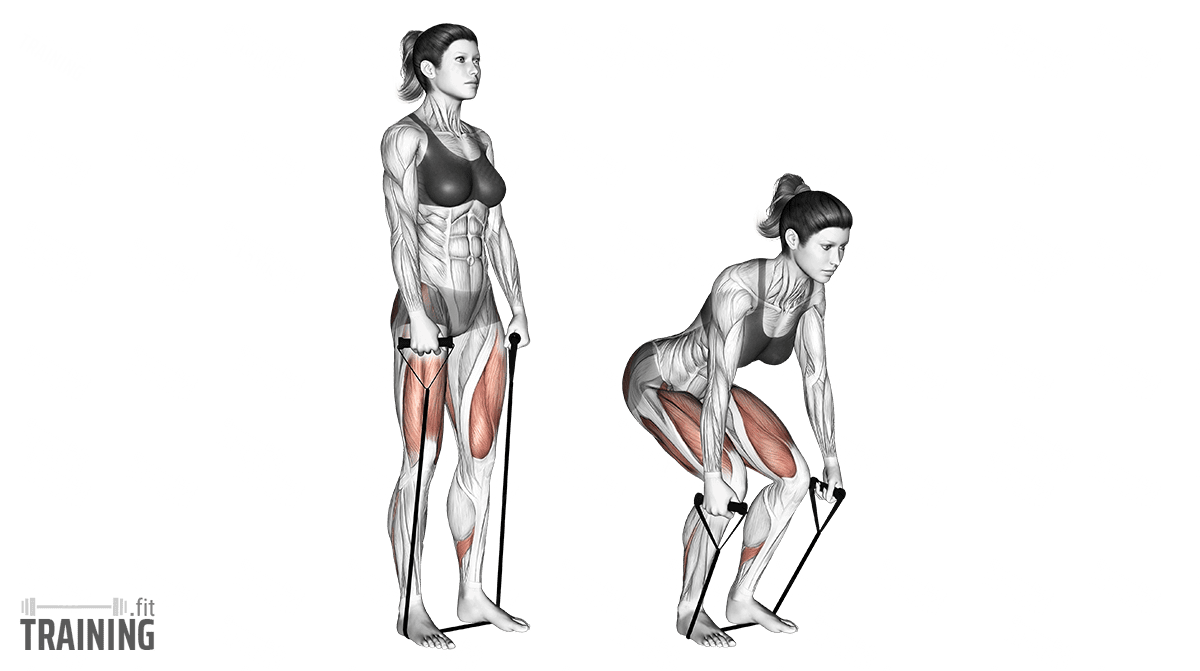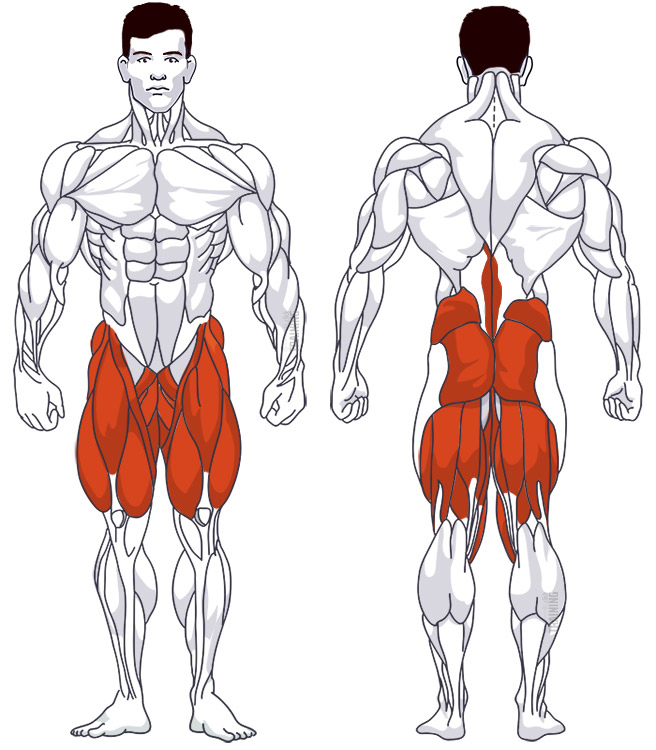Resistance Band Deadlift
Compound exercise, Free weightsOverview

Main muscles
- Thigh: Quadriceps
(Musculus quadriceps femoris) - Buttocks: Large gluteus maximus
(Musculus gluteus maximus) - Back: Back extensor
(Musculus erector spinae)
Training plans
Resistance Band Deadlift is a suitable substitute for similar exercises in lower back training or as a supplement to various training plans.
Resistance Band Deadlift: Basics and alternatives

Involved main muscle groups:
Resistance Band Deadlift
Resistance band deadlift is a fantastic exercise for training your lower back at home. The movement is pretty much the same as with a regular deadlift: You lift the weight with your upper body bent forward and straighten your torso while extending your legs and stretching your back. This primarily targets your lower back but also works your legs and butt, making it a compound exercise.
Of all the deadlift variations, deadlifting with a resistance band is most closely related to cable deadlift.
Correct execution
When deadlifting, it’s essential to focus on your posture during each rep, especially keeping your back in mind. Maintaining a straight back (with a slight arch) is crucial to minimize strain on the intervertebral discs.
It’s a good idea to perform the exercise in front of a mirror, so you can keep an eye on your form and correct any improper posture right away.
Video tutorial
Step-by-step instructions
Select the right band with the appropriate resistance. Squat down slightly, place the band centered under your feet, and stand shoulder-width apart. Hold the band with both hands at your sides.
Bend your knees and lower your hips so they’re between your knees and head height-wise. If your hips are level with your knees, you’re too far down, and you’re turning the deadlift into a squat.
Keep your back straight and form a slight arch with your lower back. Keep your head straight, aligning it with your spine and hips. Your back must not curve at any time. Engage your core. You’re now in the starting position.
Lift the band with extended arms by straightening your legs and your upper body.
You’ve reached the end of the movement when you’ve slightly pushed your hips forward, are standing upright, and the resistance band is in your hands next to your hips. Be careful not to hyperextend your back. Hold this position for a few seconds.
In a controlled manner, lower the resistance by bending your legs, leaning your upper body forward, and returning to the starting position.
Common mistakes
Your back should never be arched during the movement. When deadlifting, it’s especially important that your back posture is always 100% correct. This means your lower back forms a slight arch, and your back is otherwise straight.
The starting position, before lifting the resistance band, shouldn’t be too low. Height-wise, your hips should be between your knees and your head.